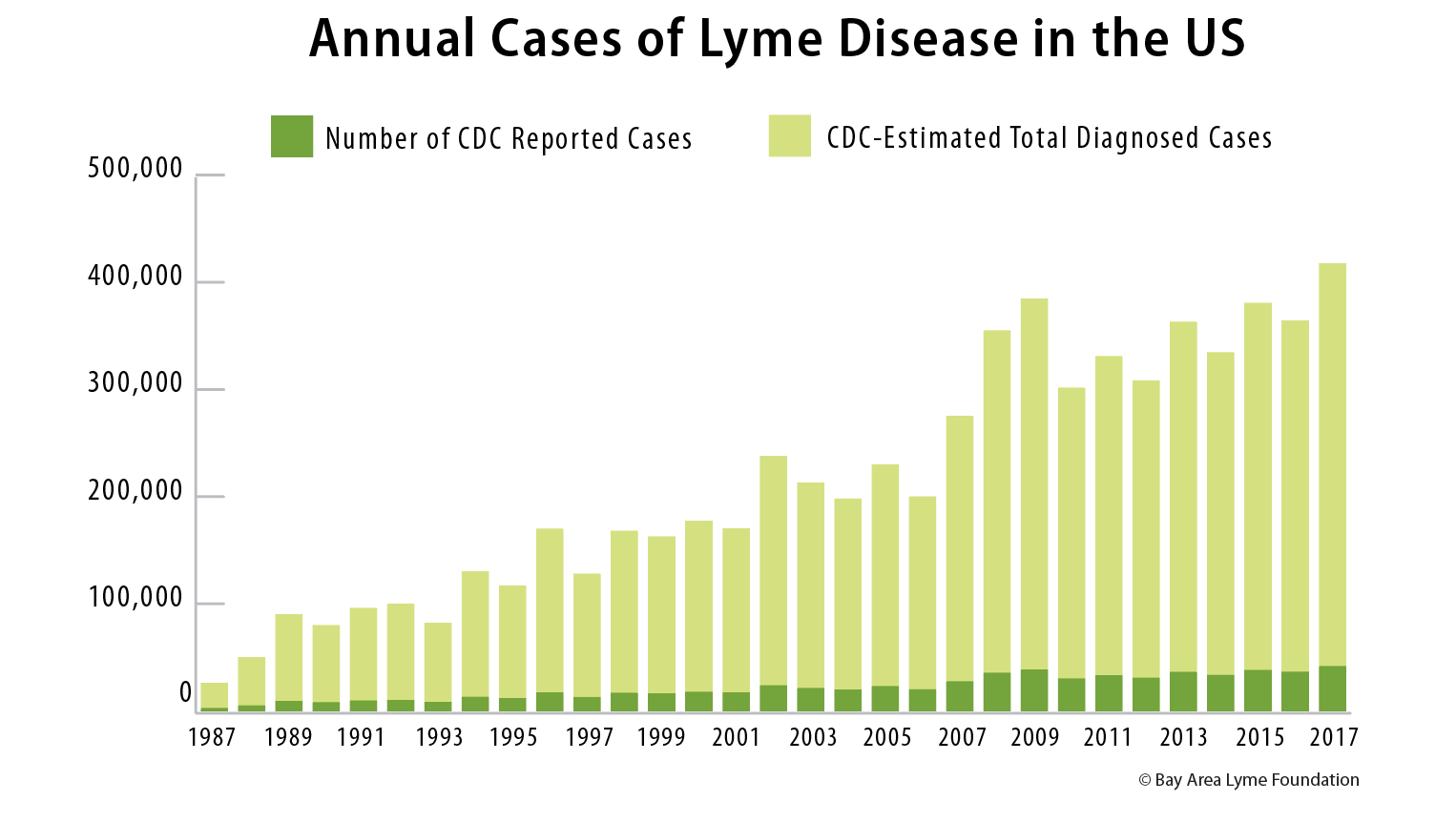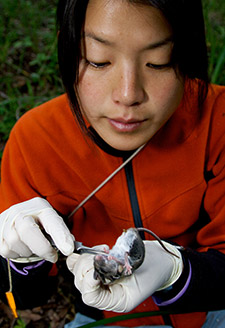Lyme disease is caused by a bacterial infection (Borrelia burgdorferi) that is transmitted by blacklegged ticks. These ticks live and feed on various wildlife species including birds, rodents, and lizards, most of which are immune to infection, and some of which even have the ability to neutralize the infection.*
People and pets, however, are not immune and there has been a significant increase in the number of cases of Lyme disease over the past 20 years. Lyme disease is now the most common vector-borne illness in the US and Western Europe.

Researching the ecology of Lyme disease
 Biodiversity and species composition, climate, and habitat range all have a significant impact on human risk for Lyme disease and likely account for the highly variable geographic incidence. Understanding the complex ecological interactions between plant and animal species within these habitats and the impact of environmental factors will help us to predict the places where people are most likely to encounter disease-bearing ticks and become infected and how we can intervene to reduce that risk.
Biodiversity and species composition, climate, and habitat range all have a significant impact on human risk for Lyme disease and likely account for the highly variable geographic incidence. Understanding the complex ecological interactions between plant and animal species within these habitats and the impact of environmental factors will help us to predict the places where people are most likely to encounter disease-bearing ticks and become infected and how we can intervene to reduce that risk.
Prevention will always be our best defense against Lyme disease. And if we understand the ecology of Lyme disease, we will be more equipped to help prevent its spread.
At Bay Area Lyme we are exploring questions such as:
- Why is Lyme disease on the rise and what can we do to reduce our risk of exposure?
- To what extent does climate change play a role?
- What are the infection rates of ticks in California? Why does the rate of incidence vary considerably from one location to another, even in close proximity?
- Which species play a greater or lesser role in the dissemination of the pathogen?
- Does the Western Fence Lizard’s ability to kill Bb really keep the tick infection rates low in California?
- How can property owners reduce the number of ticks in their yard or reduce the tick infection rates? Does introducing chickens into your yard reduce the number of ticks?
Featured Bay Area Lyme Funded Projects
Ticks and Lyme Disease in the SF Bay Area

Bay Area Lyme Foundation is committed to helping researchers better understand the ecology of ticks and Lyme disease both nationally and in the SF Bay area. Read more about the ground-breaking work by some Stanford University researchers and funded by Bay Area Lyme Foundation in this San Francisco Chronicle article . The study can be found here in PLOS One.
Also see recent press coverage about the Bay Area risk and the importance of prevention here:
*Research by Dr. Robert Lane and others at the University of California at Berkeley has documented that when ticks feed off a Western Fence lizard, the Bb bacteria inside them is destroyed. Understanding this phenomenon may provide insights into treatments for humans… Could lizards reduce the population of infected ticks? Is there something we can replicate from the lizard immune system?
Researcher image courtesy of Anand Varma